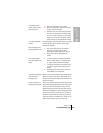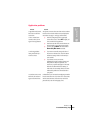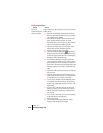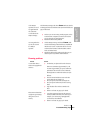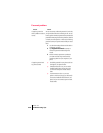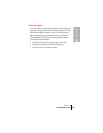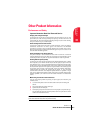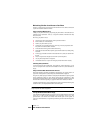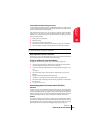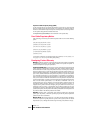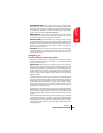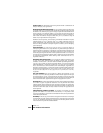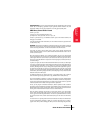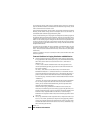
Section 11
Other Product Information 251
Other Product
Information
11
Other Product Information
Performance and Safety
Important Information About Your Phone and Service
Keeping Tabs on Signal Strength
The quality of each call you make or receive depends on the signal strength in your area. Your
phone informs you of the current signal strength by displaying a number of bars next to the
signal strength icon. The more bars displayed, the stronger the signal. If you’re inside a building,
being near a window may give you better reception.
Understanding the Power Save Feature
If your phone is unable to find a signal after 15 minutes of searching, a Power Save feature is
automatically activated and “No Service” appears in the Status Bar of the PhoneBook
application. If your phone is active, it periodically rechecks service availability. When a signal is
found, your phone returns to Standby mode and the time appears in place of “No Service” in the
Status Bar of the PhoneBook application.
Understanding How Your Phone Operates
Your phone is basically a radio transmitter and receiver. When it's turned on, it receives and
transmits radio frequency (RF) signals. When you use your phone, the system handling your call
controls the power level. This power can range from 0.006 watts to 0.2 watts in digital mode.
Knowing Radio Frequency Safety
The design of your phone complies with updated NCRP standards described below. To further
limit RF exposure, you can limit the duration of your calls and operate your phone in the most
power-efficient manner. In 1991-92, the Institute of Electrical and Electronics Engineers (IEEE)
and the American National Standards Institute (ANSI) joined in updating ANSI's 1982 standard
for safety levels with respect to human exposure to RF signals. More than 120 scientists, engineers
and physicians from universities, government health agencies and industries developed this
updated standard after reviewing the available body of research. In 1993, the Federal
Communications Commission (FCC) adopted this updated standard in a regulation. In August
1996, the FCC adopted hybrid standard consisting of the existing ANSI/IEEE standard and the
guidelines published by the National Council of Radiation Protections and Measurements
(NCRP).
Maintaining Your Phone’s Peak Performance
There are several simple guidelines to operating your phone properly and maintaining safe,
satisfactory service.
ᮣ Try not to hold the phone’s antenna and don’t twist the antenna; this will damage the
antenna.
ᮣ Don’t use the phone if the antenna is damaged.
ᮣ Speak directly into the mouthpiece.
ᮣ Avoid exposing your phone and accessories to rain or liquid spills. If your phone does get
wet, immediately turn the power off. If it’s inoperable, return it to a Sprint Store or call PCS
Customer Service Solutions for service.
Note: For the best care of your phone, only Sprint Authorized Personnel should service your
phone and accessories. Faulty service may void the warranty.



